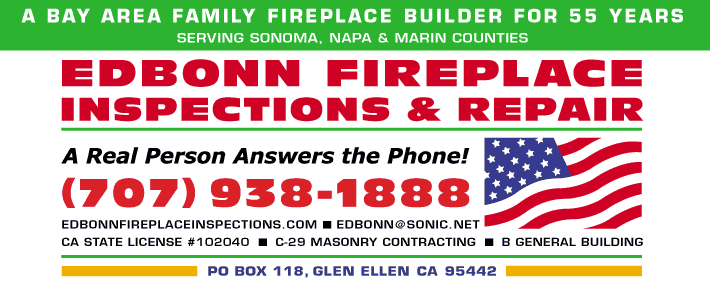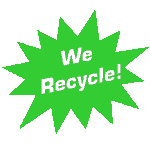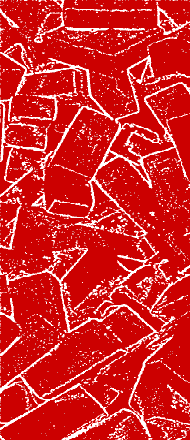



FACTS:
 Of the fireplaces we inspect, 75% have varing degrees of hazard.
Of the fireplaces we inspect, 75% have varing degrees of hazard.
 Most fireplaces that are hazardous were not built to code so it is important to check.
Most fireplaces that are hazardous were not built to code so it is important to check.
 30 to 40% of fireplaces we replaced were built before 1965 and were not built to code.
30 to 40% of fireplaces we replaced were built before 1965 and were not built to code.
 60-70% of fireplaces built after 1965 that failed, were due to poor workmanship, inferior materials or lack of expertise.
60-70% of fireplaces built after 1965 that failed, were due to poor workmanship, inferior materials or lack of expertise.
 Potential fire hazards can include a broken chimney, an unpermited gas line or an installation defect having used a wood material too close to the firebox. A smoking fireplace can be due to a misplaced damper or undersized flue. Sometimes the reason can be elusive and requires extensive testing.
Potential fire hazards can include a broken chimney, an unpermited gas line or an installation defect having used a wood material too close to the firebox. A smoking fireplace can be due to a misplaced damper or undersized flue. Sometimes the reason can be elusive and requires extensive testing.
 A chimney will not move if it is built to code with proper rebar. The rebar must be continuous from the footing to the top of chimney and should have been installed when the fireplace was originally built.
A chimney will not move if it is built to code with proper rebar. The rebar must be continuous from the footing to the top of chimney and should have been installed when the fireplace was originally built.
 Potential earthquake hazards can include the following: A broken chimney, a lack of seismic straps securing the fireplace to the structure of the house, an undersized foundation or that the chimney is pulling away from the house. If there is movement when tested (by pushing on the chimney above the roofline), that means it is damaged and could break loose.
Potential earthquake hazards can include the following: A broken chimney, a lack of seismic straps securing the fireplace to the structure of the house, an undersized foundation or that the chimney is pulling away from the house. If there is movement when tested (by pushing on the chimney above the roofline), that means it is damaged and could break loose.
 No amount of testing by pushing on the chimney will break it if it is built to code. Fireplace repair or building is NOT for the do-it-yourselfer.
No amount of testing by pushing on the chimney will break it if it is built to code. Fireplace repair or building is NOT for the do-it-yourselfer.
 Repairs involved by removing the chimney down to the break and building back to the top with brick and inserting rebar down the remaining exterior is not safe and the weight of the new masonry will fall in a substantial earthquake. A safe repair would be a seismic metal & fireproof material retrofit which is light weight and can safely be built from the break up to the top of the chimney. Click to see photo and the following handouts: Anatomy of a fireplace & Structural Requirements.
Repairs involved by removing the chimney down to the break and building back to the top with brick and inserting rebar down the remaining exterior is not safe and the weight of the new masonry will fall in a substantial earthquake. A safe repair would be a seismic metal & fireproof material retrofit which is light weight and can safely be built from the break up to the top of the chimney. Click to see photo and the following handouts: Anatomy of a fireplace & Structural Requirements.
FAQS:
Q Doesn't getting a permit guarantee that a fireplace is built to code, both UBC and CBC (Universal Building Code and California Building Code)?
A No! No! No! Getting a permit is only the first step. An inspector must be called from your local building department during the process of the job to ensure that every aspect is checked for correctness and safety. Only a final sign-off by the inspector confirms the job was built to code and therefore safe. Unfortunately, after a permit is pulled, the law does not require inspections and a final sign-off unless requested by the owner or builder. Without inspections and final sign-off there is no assurace that the work was performed to safety codes.
Q Why do I have to pay EdBonn for another inspection when I just paid a chimney sweep or home inspector? They found something and referred me to EdBonn Masonry.
A We perform more than a chimney inspection. They referred you to Edbonn because they detected an area in the fireplace that is a hazard which requires help by an experienced and licensed fireplace builder. We inspect the fireplace in depth for any and all areas that could cause a fire or the escape of noxious gases into the house. Existing earthquake damage and the possibility of the fireplace falling over in the next earthquake are big factors. Many of the fireplaces in the Bay Area have not been built to code and should be immediately retro-fitted, repaired, rebuilt or removed completely. A licensed fireplace builder must perform a thourough inspection covering every aspect of the fireplace inside and out.
Q Should I get the fireplace swept before an inspection?
A No. It is not necessary since we look at the structural aspects of the fireplace and leaving the chimney as is provides clues as to how it burns. Edbonn will recommend a cleaning if necessary.
Q Is it true that all masonry fireplaces are banned?
A No, but ordinances vary in different cities and counties. Masonry fireplaces can be rebuilt (including Rumford fireplaces) to code with no restrictions in some areas. In other areas a masonry fireplace can be rebuilt to code with a permanently affixed gas log or or an EPA approved insert in the masonry firebox with a chimney liner which could be wood burning, gas or pellet. All new inserts sold in California are now EPA approved.
Q My masonry fireplace is failing and I am told that a metal liner inside the chimney and/or chimney straps can be installed to make it safe. Is this true?
A Absolutely not! Neither the liner nor chimney straps, which are wrapped around the stack and connected to the side of the house, will support the weight of a masonry fireplace in the event of an earthquake. Property and people can get hurt.
Q Can you fill in the cracks or gaps in the chimney to save money? Why does the chimney have to be replaced when it hasn't fallen over in 40+ years?
A No! Cosmetic fixes are one of the most dangerous procedures in the industry. It does absolutely nothing to make the chimney or fireplace safe. And it doesn't look good either. Every earthquake weakens the fireplace and eventually the chimney will fall over when least expected. One of the "fixes" we see most often is the inserting of a metal liner in a broken fireplace that is intended to hold up in an earthquake. It will not! The weight of the masonry is much too great. Being creative and attaching straps to the roof will not work either. However, stabilizers are safely used on very tall stacks when the fireplace is built to code with the required rebar and other essentials.
Q Why do fireplaces fail?
A Because the fireplace was built before 1965 when seismic codes were implemented or because of negiligence, lack of knowledge or to cut corners on materials (which we consider a criminal offense). The most common cause of failure is the lack of required rebar. Another is to do nothing to repair a serious defect in order to keep costs down in a home sale.
Q What can I expect if I have an insert installed in my firebox?
A First of all, make sure your fireplace is fire and earthquake safe inside and out and be sure the insert is EPA approved. (All inserts made in California are EPA approved). Make sure the chimney is safe before the required chimney liner is installed.
Q Do you give free estimates?
A We do not give “estimates” which implies guessing. Our job is to inspect fireplaces and our service includes a complete and comprehensive inspection inside and out. This is followed up with a detailed written report and solid proposal for any work needed to make the fireplace safe and sound. Our recommendations are based upon our experience of building masonry fireplaces for over 50 years. A fee is based upon the distance from our office.
Q Can you provide a ballpark quote at the time of inspection?
A No. That would not be fair to either party. Edbonn's procedure to determine the cost is a study of all considerations and options. This is determined in the office. A detailed written report and solid proposal follows promptly after the inspection.
Q Can you give us an inspection today?
A Since service is our motto, we try to schedule inspections quickly. Since we cover Marin, Sonoma and Napa counties we must plan accordingly. When we can, we'll do same day inspections.
Q Do you guarantee your work?
A Absolutely! There are laws to protect the public. As a local family run business we take pride in our service and honesty. We are licensed and work with permits when required to ensure safety. This includes a final inspection by the city or county. We will gladly return should any issue or question arise. Our motto is to build it right the first time.
HOME | SERVICES | FACTS/FAQS | GALLERY | ABOUT US | CONTACT | SUPPLIERS
© 2010 EdBonn Masonry Contracting Company



